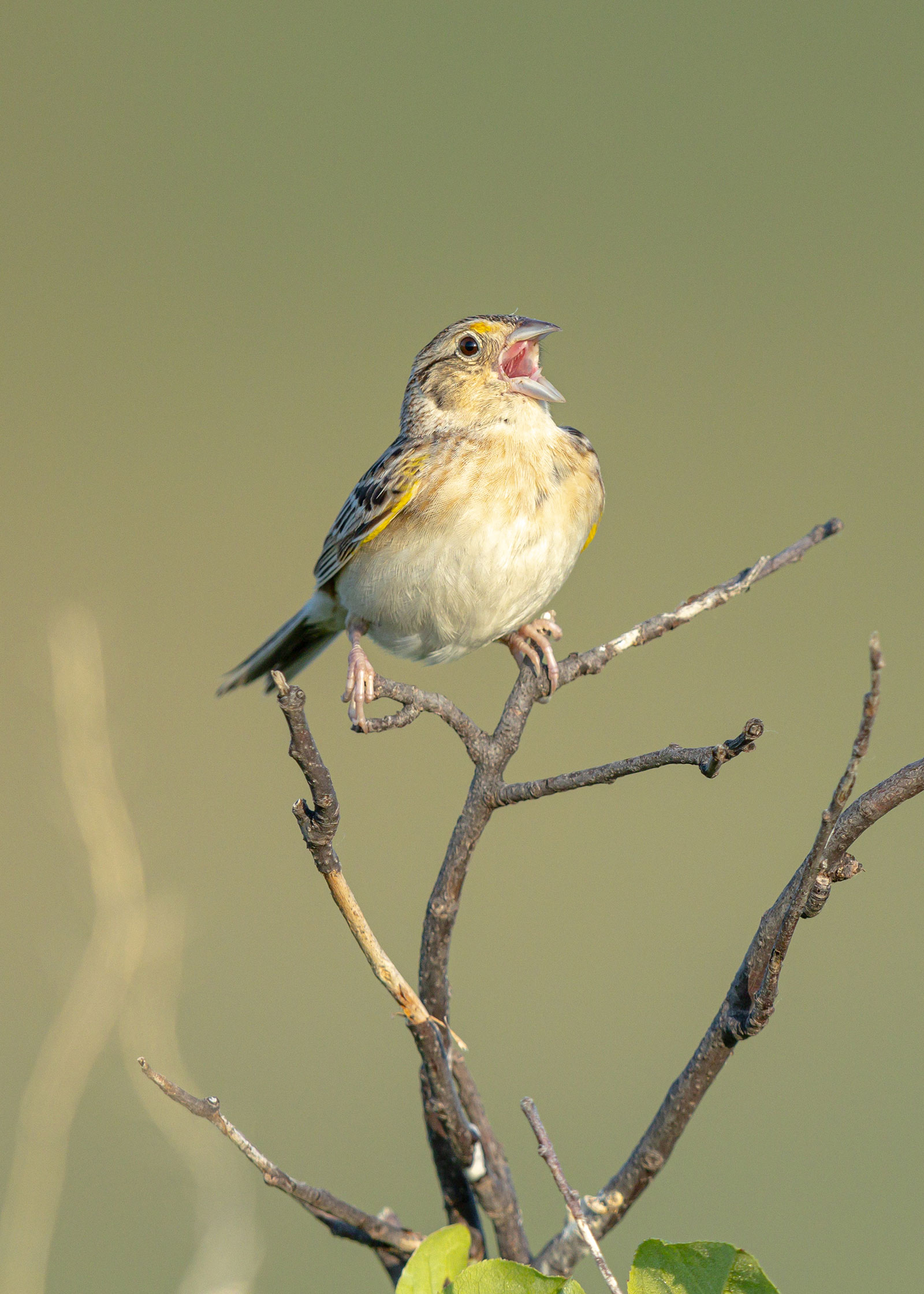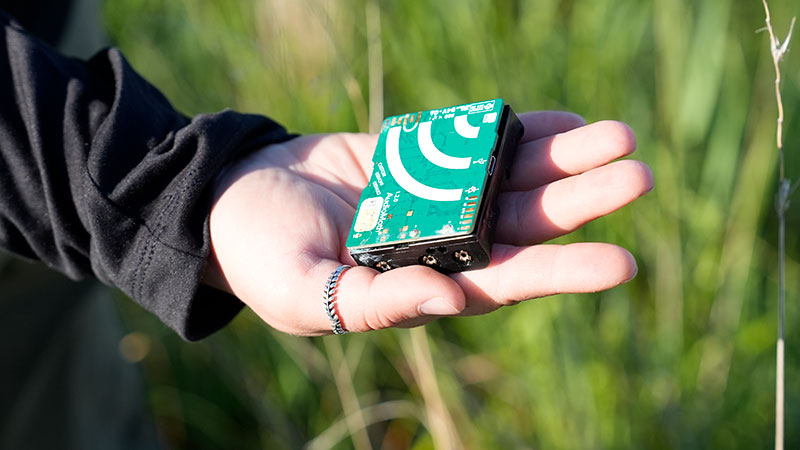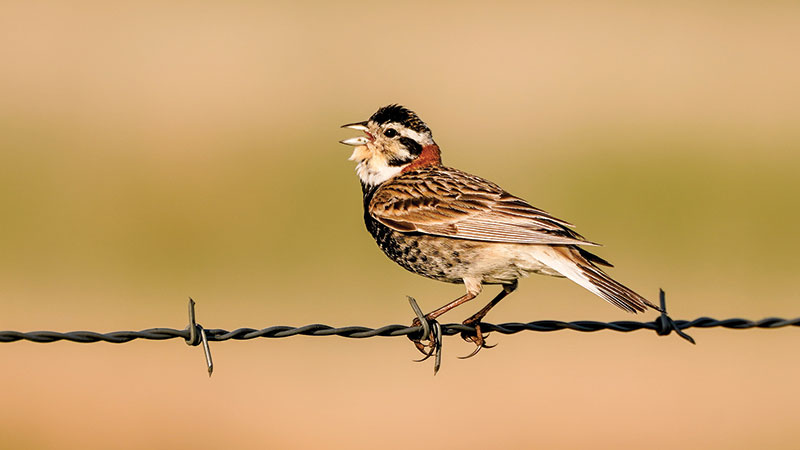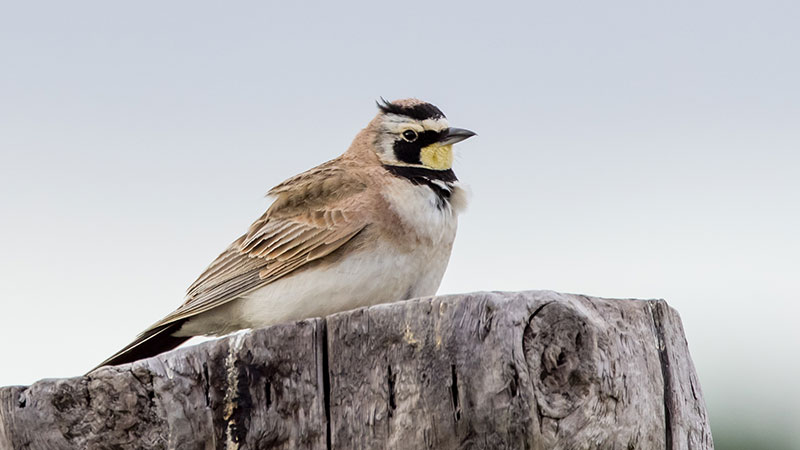Listening for Birds on Grasslands
Ron Wilson

For a prairie state, North Dakota doesn’t have as much of it as it used to.
Scientists have been telling us for years that 75% of the state’s native grasslands are no longer.
While the cry to safeguard what remains for the wellbeing of humans and the untold number of wild and domestic animals that utilize this vital landscape have mostly gone unanswered over the years, the formidable effort to conserve and restore grasslands in the state endures.
A major player in this effort is the Meadowlark Initiative, a statewide strategy that teams landowners, conservation groups, scientists and others to enhance, restore and sustain native grasslands in North Dakota.
Ashlyn Herron, a University of North Dakota master’s in biology student, is one of those scientists using technology to determine if high-quality grassland habitat restoration through the Meadowlark Initiative is successfully occurring.
Herron is the perfect fit for this task.
“Prairies have always been very near and dear to my heart.
I grew up on the prairies of Alberta, so I’m a child of the prairies,” she said.
“Considering how endangered our grasslands are, what the Meadowlark Initiative is doing is key to ensuring persistence of this ecosystem.”
Herron’s research employs the use of autonomous recording units, or ARUs, to record bird presence on reseeded grasslands.

An autonomous recording unit, or ARU, used to record bird presence on reseeded grasslands in North Dakota.
“And we’re also comparing bird response from the reseeded grasslands to intact grasslands in the area, as well as cropland, so we can kind of see how occupancy of vocal birds is changing through stages of restoration,” she said.
The ARUs are basically a circuit board, microphone, battery pack and a computer chip housed in vacuumed-sealed bags to protect them from the elements.
The units are secured to a metal post and record 10 minutes of audio three times every morning from 5:50 to 7:50 a.m.
To decipher the many, many bird calls and accurately assign them to bird species using the survey sites, Herron said they use BirdNet, which is a deep neural network machine learning classifier.
Kevin Kading, Game and Fish Department private land section leader, visited one of Herron’s Burleigh County study sites in early June that he guessed to be about 80 acres.
“It’s kind of like that old saying that if you build it, they will come.
A lot of birds will find these restored grasslands, expand into them and set up new territories,” he said.
“These restored grasslands mean a lot especially with habitat conditions the way they are right now in our state.
These acres can make a difference for a lot of grassland birds.”
And other wildlife, too.
“From the smallest insects to big game animals like white-tailed deer.
There is great fawning habitat that we’re creating here.
Great bedding habitat, escape cover.
It’s all those things,” Kading said.
“These acres of restored grassland will be on the landscape for years to come and will benefit the landowner and wildlife for a long time.”
Kading said the restored grasslands are not uniform in size and they don’t have to be.
Size doesn’t matter, especially if new grass is added to existing grassland habitat adding to the patch size.
“I would go as far as to say the status of habitat right now in some parts of the state is probably at its lowest point that I’ve seen in my career.
We’ve lost a lot of grass, not just CRP, but native grasslands.
North Dakota only has about 25% of its native grasslands remaining, and maybe over half of our wetlands are remaining,” he said.
“When you combine the loss of grass and wetlands with the loss of tree rows, fence lines and the little odd areas that people are used to seeing, it’s significant.
A lot of those are not on the landscape anymore.
And so, every one of these projects like this really does help.
And whether it’s a smaller project or a larger project, every acre helps and every acre counts.”
Even so, participation in programs to put more wildlife habitat on the landscape in North Dakota needs to increase.
“I’ve been saying for a while that there are more programs and partners and dollars available right now than ever before.
I would say if a landowner is simply interested and wants to find out more, they can always call Game and Fish and start asking questions of one of our private land biologists,” Kading said.
“Another thing that’s kind of handy for some people is the Dakota Legacy Initiative website that ag and conservation partners put together a couple of years ago that is meant to be the one stop shop for landowners and people like us who are working in these programs.
For example, if someone wants to look at what wetland practices are available in Burleigh County, they can do a search and it will spit out a number of different partners and programs and contact information, which is handy for people wanting to do some searching on their own.
Or, again, they can call Game and Fish anytime and we’ll guide them in the right direction.”
Kading added that landowners don’t always have to enroll in whatever programs to make a difference on the landscape.
“They may not want to be in a program and have a contract with USDA, Game and Fish or someone like that, but simply want to receive some technical assistance,” he said.
“Someone can come out and say, ‘Here’s what we suggest, here’s some good grass species, here’s what might be good for your operation.’
And there’s no contract involved with that.
It’s just helpful advice.”

Upland sandpiper


